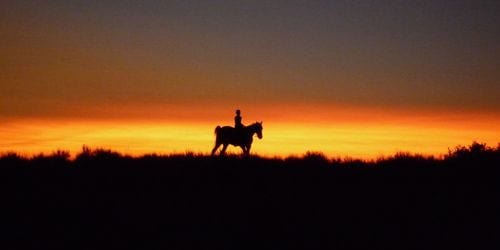
“Our only show was movie night in the church basement,” remembers Neil Diamond of his childhood on a Cree Indian reservation. More often than not, the movie was a Western, and the kids in the audience thrilled to the adventure and the violence, most often identifying with the courageous cowboys. As Clint Eastwood observes, the mythology offered in U.S. Westerns is powerful: “A lone guy traveling across the wide landscape, dealing with the elements,” Eastwood says. “Everything from rattlesnakes to who knows what.”
This “who knows what” includes, of course, Native Americans. As indicated in Diamond’s documentary, Reel Injun: On the Trail of the Hollywood Indian, images of American Indians have undergone numerous changes throughout the history of cinema. Premiering 2 November as part of Independent Lens series, the film also serves as PBS’ introduction to its programming for November, Native American Heritage Month. As such, it offers a short range of views of that heritage on film, from Eastwood (who says that when he was first began making Westerns, a director wanted to cast a “real Indian upfront,” but, “Well, we couldn’t find one”) to Adam Beach, whose performance as Ira Hayes in Eastwood’s Flags of Our Fathers offers a heartbreaking illustration of the tolls of American racism and stereotyping. Historians, actors, and film critic Jesse Wente tend to agree that U.S. movie representations have created a lasting impression: “We don’t wear feathers and ride horses,” says Diamond, “But because of the movies, a lot of the world still thinks we do.”
Cut down from its original 85 minutes to 50 or so, the documentary combines its concise history with Diamond’s road trip to Hollywood. On the way, he stops off at “the Great Plains,” noting the significance of Little Big Horn and Wounded Knee, paying homage to Tȟašúŋke Witkó (Crazy Horse), the Wounded Knee Massacre (the 7th Cavalry Regiment’s murder of 300 free Lakota in 1890), and the 1973 standoff at Pine Ridge, between American Indian Movement members and the FBI and U.S. Marshals. As Russell Means recalls here, during that siege, he and other AIM members believed they would not emerge alive, but then they saw Sacheen Littlefeather at the Academy Awards ceremony in LA, reading Marlon Brando’s statement against the “treatment of American Indians by the film industry” and in support of AIM. It was, Means remembers, a stunning moment of recognition for the movement: after the first surprise of seeing Littlefeather on TV (“Hey, there’s an Indian!”), the controversial speech made their cause visible. “Marlon Brando and Sacheen Littlefeather uplifted our lives,” he says. In such a spotlight, the protestors were less likely to be killed by government agents.
Such real life victories have been supplemented, the film suggests, by erratic and sometimes small changes within that same film industry. Surely, it’s good to leave behind the days of the “savage” Indian portrayals, the use of Pocahontas as “the embodiment, not of Native society, but the embodiment of American society, of American desire,” according to historian Angela Aleiss), and the appearances of white stars in redface (Burt Lancaster, Charles Bronson, Elvis). Landmark performances by Will Sampson in One Flew Over the Cuckoo’s Nest and Chief Dan George in The Outlaw Josey Wales are also encouraging. Still, the documentary argues, the spate of white men among Natives movies (Last of the Mohicans, Black Robe) remains troubling (comedian Charlie Hill complains that in Dances With Wolves, it’s ridiculous that the white woman, Stands With a Fist (Mary McDonnell), is dressed “like Wilma Flintstone, with mud on her, and disheveled and lost,” as Means scoffs that the Kevin Costner character had to teach the Lakota “how to fight.”
With AIM activist John Trudell’s casting inThunderheart and the emergence of an independent Native cinema, Reel Injun argues, the landscape shifted yet again. Chris Eyre’s Smoke Signals, Atanarjuat (The Fast Runner), by Inuk director Zacharias Kunuk, as well as Whale Rider, Once Were Warriors, and Dance Me Outside, present still more diverse images. As these more recent, on-Hollywood films use Native story structures, mythologies, and experiences, as well as performers and iconography, they model new possibilities. Eyre distinguishes between the two films, saying that his is “made for the Indian people but also for the overculture,” while Atanarjuat is “an inside job.”
That’s not to say that cooptation and stereotyping are now forgotten or even done, it is to say, as Reel Injun suggests, that what Kunuk calls “talking back” is a process, long awaited and looking forward.

![Call for Papers: All Things Reconsidered [MUSIC] May-August 2024](https://www.popmatters.com/wp-content/uploads/2024/04/all-things-reconsidered-call-music-may-2024-720x380.jpg)



